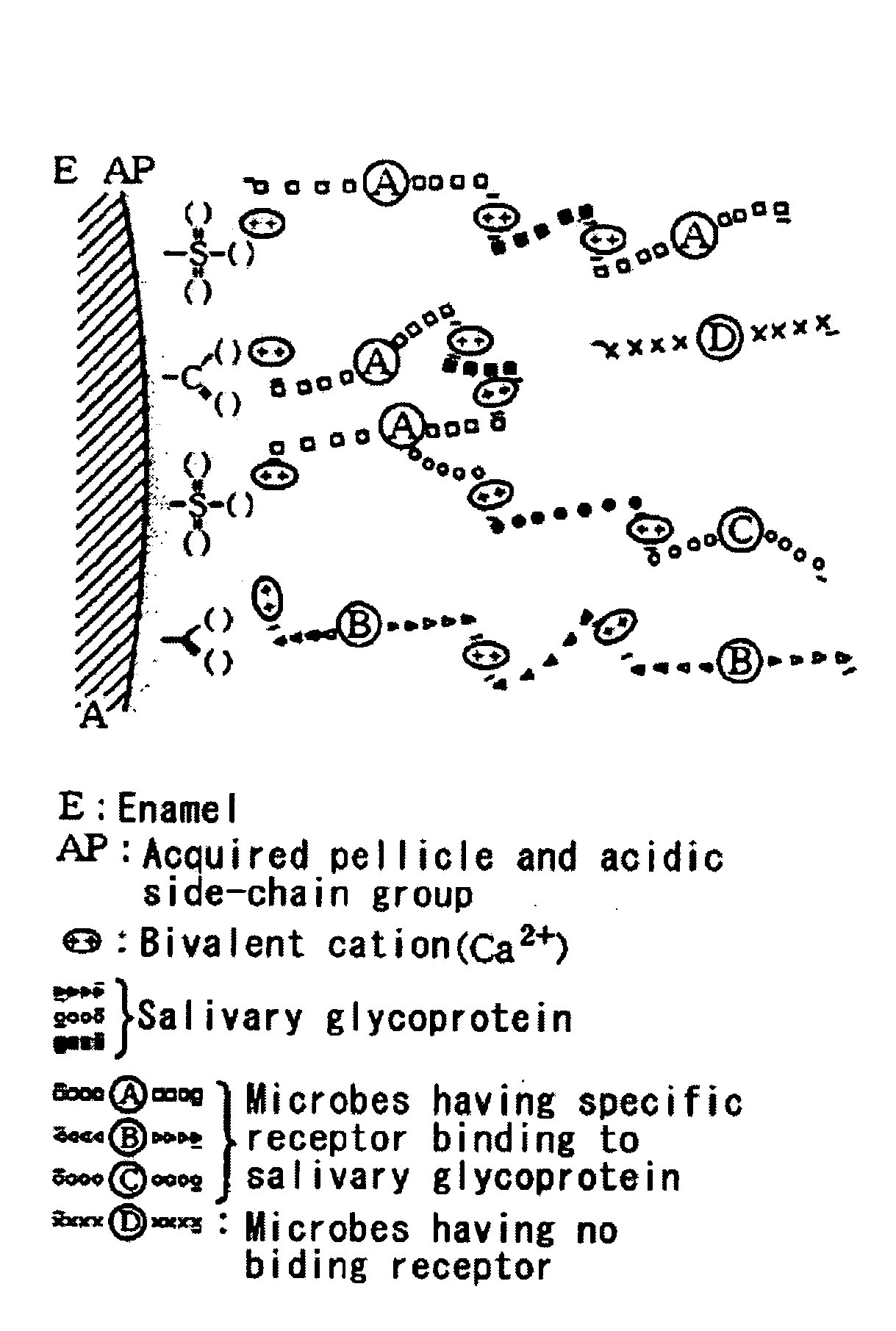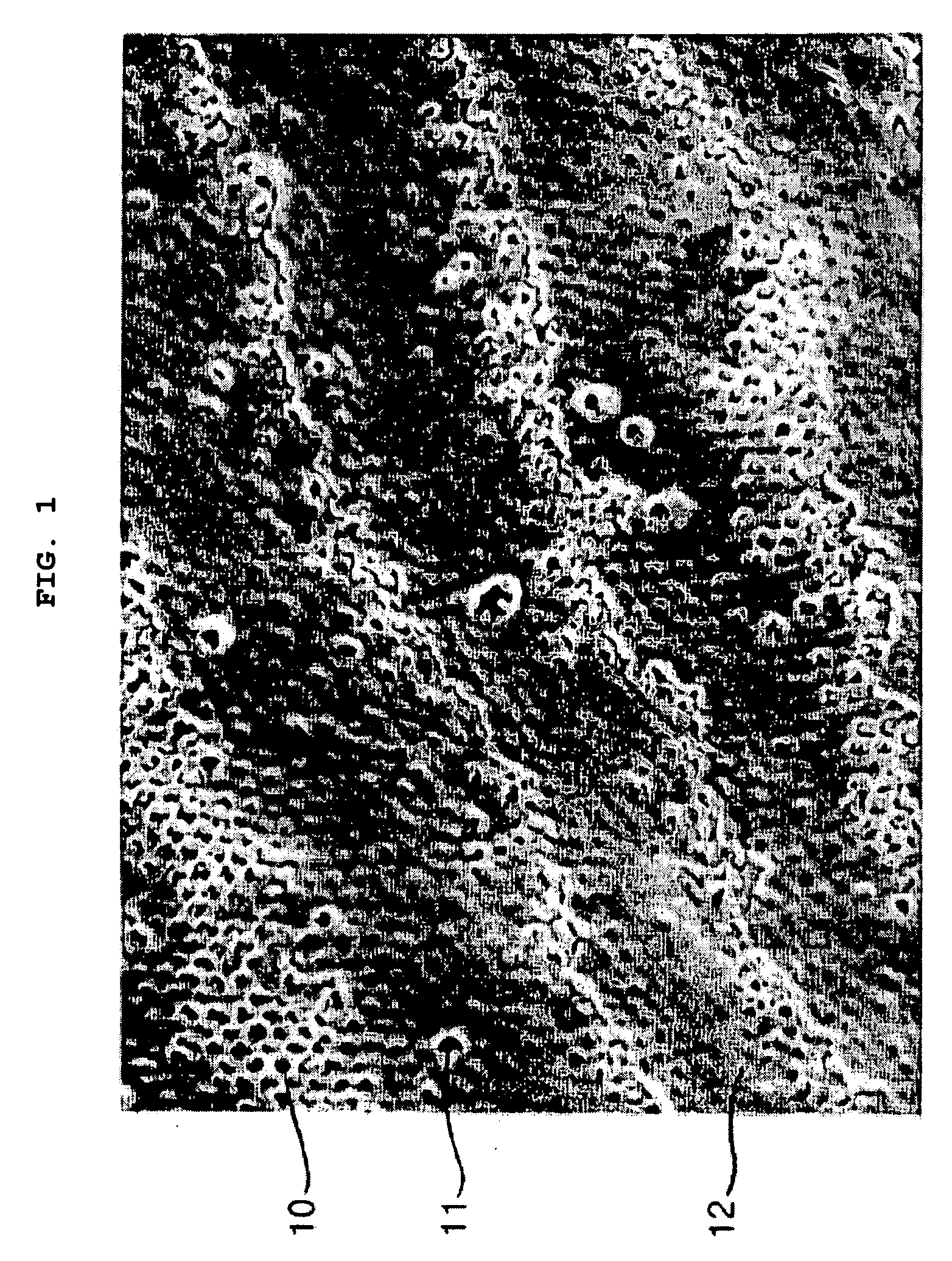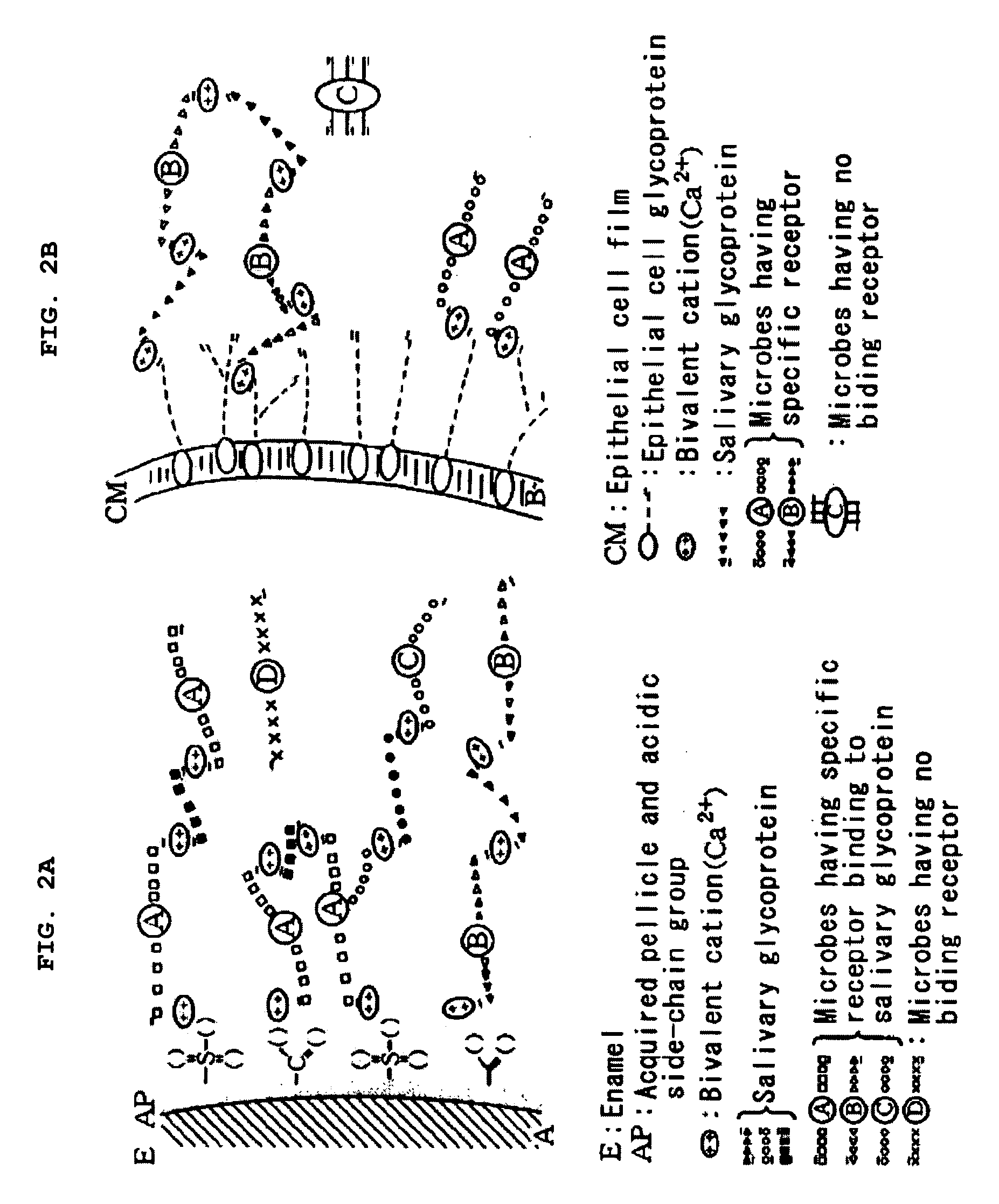Oral cavity disinfectant and oral cavity disinfecting method
a disinfectant and oral cavity technology, applied in the field of oral cavity disinfectant and oral cavity disinfecting method, can solve the problems of deteriorating sterilization capacity in oral cavity, affecting the safety of oral cavity, so as to prevent microbial proliferation, improve safety, and be easily miscible
- Summary
- Abstract
- Description
- Claims
- Application Information
AI Technical Summary
Benefits of technology
Problems solved by technology
Method used
Image
Examples
examples
[0058]FIGS. 3 to 10 are diagrams showing data on test results of salivary microbes in an oral cavity of each subject before and after use. Table A in each figure shows the results in respective test items, and chart B shows the results in a diagram format. The test was performed by using a commercially available kit manufactured by BML Co., Ltd. Among the subjects in the Example, subject 1 is a male of 36 years; subject 2 is a female of 35 years; subject 3 is a male of 32 years; and subject 4 is a female of 31 years of age. The test items include degree of tooth polishing after meal (by organoleptic test), appearance of an oral cavity (by visual observation), living habits (meal period, foods served, etc.), smoking (smoking or non-smoking, number of cigarettes), plaque index (indicator of the amount of plaques), gingivitis index (indicator of the degree of gingivitis), A. a. microbial count, P. g. microbial count, total microbial count in the oral cavity (count of all microbes, inde...
PUM
 Login to View More
Login to View More Abstract
Description
Claims
Application Information
 Login to View More
Login to View More - R&D
- Intellectual Property
- Life Sciences
- Materials
- Tech Scout
- Unparalleled Data Quality
- Higher Quality Content
- 60% Fewer Hallucinations
Browse by: Latest US Patents, China's latest patents, Technical Efficacy Thesaurus, Application Domain, Technology Topic, Popular Technical Reports.
© 2025 PatSnap. All rights reserved.Legal|Privacy policy|Modern Slavery Act Transparency Statement|Sitemap|About US| Contact US: help@patsnap.com



